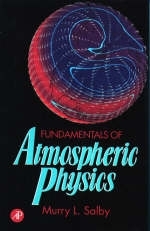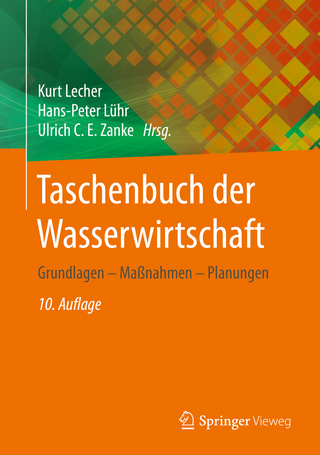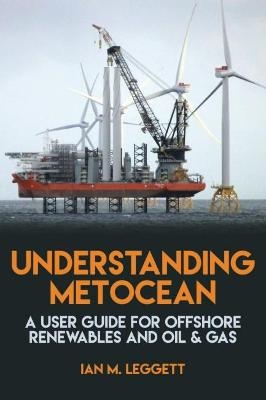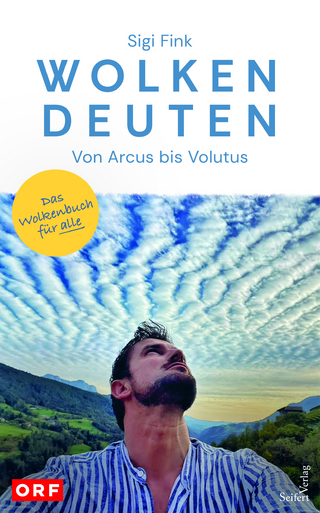
Fundamentals of Atmospheric Physics
Academic Press Inc (Verlag)
978-0-12-615160-2 (ISBN)
Fundamentals of Atmospheric Physics emphasizes the interrelationships of physical and dynamical meteorology. The text unifies four major subject areas: atmospheric thermodynamics, hydrostatic equilibrium and stability, atmospheric radiation and clouds, and atmospheric dynamics. These fundamental areas serve as cornerstones of modern atmospheric research on environmental issues like global change and ozone depletion. Physical concepts underlying these subject areas are developed from first principles, providing a self-contained text for students and scholars from diverse backgrounds.
The presentation is Lagrangian (single-body problems) in perspective, with a balance of theory and application. Each chapter includes detailed and extensive problems; selected answers are provided, as are appendices of various constants. The text requires a thorough foundation in calculus.
Murry L. Salby is a climate scientist and former chair of climate at Macquarie University, where he worked from 2008 to 2013. He has written two textbooks, Fundamentals of Atmospheric Physics (1996), and Physics of the Atmosphere and Climate (2011), the latter building on his first book, offers an overview of the processes controlling the atmosphere of Earth, weather, energetics, and climate physics. He has also authored over a hundred referenced articles in scientific journals.Salby got his Bachelors in aerospace engineering in 1973, and his PhD in environmental dynamics from Georgia Tech in 1978, including a Sigma Xi: The Scientific Research Society doctoral research award. He began as an assistant professor at University of Colorado Boulder's Department of Atmospheric and Oceanic Sciences in 1984, became an associate professor in 1985, and professor in 1991, gaining tenure in 1998, before resigning in 2007. He has also held positions as a visiting professor and scientist at institutions in the U.S., Sweden, Australia, France, and Israel. He became professor of environmental science at Macquarie University, and worked there from 2008-2013.1978-1980. Fellow, Advanced Study Program, National Center for Atmospheric Research. Independent research.1980-1982. Scientist, Global Observations, Modeling and Optical Techniques Project, National Center for Atmospheric Research, Pure and applied research in conjunction with remotely sensed fields derived from Nimbus-6 LRIR, and Nimbus-7 LIMS. See High Resolution Dynamics Limb Sounder.1982-1984. Visiting scientist, Geophysical Fluid Dynamics Program, Princeton University. Independent research.1984-1985. Assistant professor, Department of Astrophysical, Planetary, and Atmospheric Sciences, University of Colorado.1985-1990. Associate professor, Department of Astrophysical, Planetary, and Atmospheric Sciences, University of Colorado.1986-1999. Director, Center for Atmospheric Theory and Analysis, University of Colorado.1988-2002. Affiliate scientist, Atmospheric Systems and Analysis.1987. Visiting professor, Meteorological Institute, University of Stockholm, Stockholm, Sweden.1990-1991. Lady Davis visiting professor, Department of Atmospheric Science, Institute of Earth Sciences, Hebrew University of Jerusalem, Israel.1991-2007. Professor, Department of Astrophysical, Planetary, and Atmospheric Sciences, University of Colorado.1997. Visiting senior scientist, Centre Nationale Researches Scientifique/University of Paris, Paris France.1998. Visiting scientist, Bureau of Meteorology Research Center, Melbourne Australia.2000. Visiting scientist, Center for Ocean Land and Atmosphere, Washington DC.2007. Visiting scientist, Bureau of Meteorology Research Center, Melbourne Australia.2008-2013. Professor of Environmental Science, Macquarie University. Renata Dmowska works in the School of Engineering and Applied Sciences at Harvard University in Cambridge, MA, USA.
A Global View. Thermodynamics of Gases. The Second Law and Its Implications. Heterogeneous Systems. Transformations of Moist Air. Hydrostatic Equilibrium. Hydrostatic Stability. Atmospheric Radiation. Aerosol and Clouds. Atmospheric Motion. Atmospheric Equations of Motion. Large-Scale Motion. The Planetary Boundary Layer. Atmospheric Waves. The General Circulation. Hydrodynamic Instability. The Middle Atmosphere. Appendices. Chapter Problems. Answers to Selected Problems. References. Subject Index. (Section Headings): A Global View. Thermodynamics of Gases. The Second Law and Its Implications. Heterogeneous Systems. Transformations of Moist Air. Hydrostatic Equilibrium. Hydrostatic Stability. Atmospheric Radiation. Aerosol and Clouds. Atmospheric Motion. Atmospheric Equations of Motion. Large-Scale Motion. The Planetary Boundary Layer. Atmospheric Waves. The General Circulation. Hydrodynamic Instability. The Middle Atmosphere. Appendices. Chapter Problems. Answers to Selected Problems. References. Subject Index.
| Erscheint lt. Verlag | 23.5.1996 |
|---|---|
| Reihe/Serie | International Geophysics |
| Mitarbeit |
Herausgeber (Serie): Roger A. Pielke, Renata Dmowska |
| Verlagsort | San Diego |
| Sprache | englisch |
| Maße | 152 x 229 mm |
| Gewicht | 1160 g |
| Themenwelt | Naturwissenschaften ► Geowissenschaften ► Meteorologie / Klimatologie |
| Naturwissenschaften ► Physik / Astronomie ► Angewandte Physik | |
| ISBN-10 | 0-12-615160-1 / 0126151601 |
| ISBN-13 | 978-0-12-615160-2 / 9780126151602 |
| Zustand | Neuware |
| Informationen gemäß Produktsicherheitsverordnung (GPSR) | |
| Haben Sie eine Frage zum Produkt? |
aus dem Bereich


